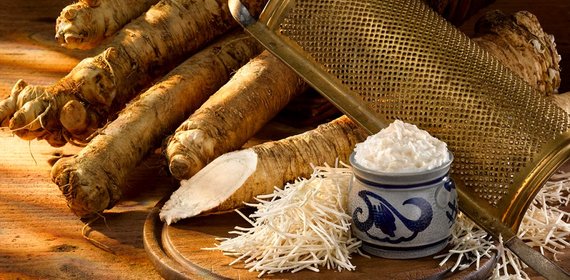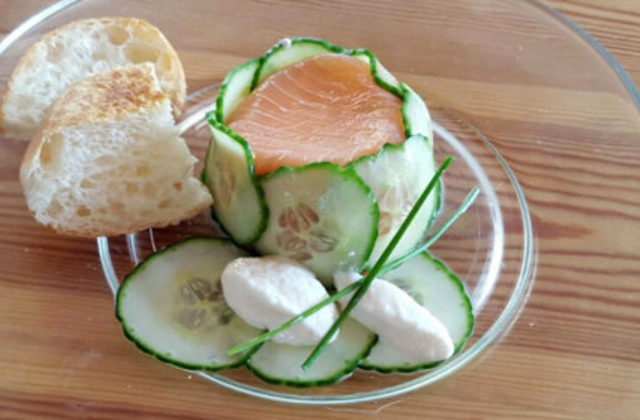Franconian Horseradish
Horseradish has always been a part of Franconian cuisine and refines fish and meat - such as the famous Nuremberg bratwurst - and naturally also sauces and salads. The fertile soil between Bamberg, Nuremberg and the Steigerwald Forst is ideal for cultivating horseradish. Here, the largest and most traditional growing area in Germany has evolved.
Naturally Healthy Power of Nature
There's a lot of good hidden in these spicy roots. they not only offer your palate a firework of spicy flavor, but are also very healthy: With twice as much Vitamin C as a lemon, essential oils and the antibiotic sinigrin, horseradish stimulates the circulation, invigorates the senses, strenghtens the immune system, activates the metabolism, encourages digestion an awakens life forces. The farming and cultivation of the vegetable still requires a lot of hand labor. Even today, the time-consuming special crop requires much care, demanding many manual work steps.
Origin of Horseradish
In the 15th century, the Nuremberg Margrave Johann von Schloss Scharfeneck is believed to have brought horseradish back from one of his many journeys to foreign lands. Just like the plant, "Kren", the Bavarian and Austrian name for the vegetable, most likely comes from southeastern Europe: The Slavic word "krenas" means "to cry", because the biting-spicy root will cause tears in your eyes when you rub it.
Franconian horseradish farmers share the belief that the name for the vegetable in German - "Meerrettich", or "sea radish" - comes from the fact that the root was brought here over the ocean. It is more likely that the name comes from the book "Garten der Gesundheyth" - "Garden of Health". Published in 1564, book gives horseradish the Latin name "raphanus major" or "large radish" which became "more" or "Mehr" radish in German. In the English name, the word "horse" (as applied in "horseradish") is believed to denote large size and coarseness.
Since 2007, Bavarian horseradish has been awarded a "Protected Geographical Indication" (PGI) from the European Union. Real Bavarian horseradish can be eaten fresh, from a glass or packed in a tube.

Schamel Horseradish - The Original Since 1846
Schamel is the oldest horseradish brand in the world. Since the company was founded in 1846, the Schamel family has kept the secret of producing the finest quality in Bavarian horseradish. The family's goal, to produce horseradish of the finest quality and make it an indispensable part of food culture, has been followed by more than six generations.
Production takes place exclusively in the Franconian horseradish captital Baiersdorf, which is located in the tradition-steeped horseradish growing area north of Nuremberg. Hand-picked horseradish roots are prepared fresh daily and made into the exquisite Schamel horseradish varieties. With partnership growing agreements with producers, Schamel protects the future of Bavarian horseradish cultivation and guarantees the use of the entire local horseradish harvest. That assures the quality of the raw material and product freshness, protects the environment through short delivery distances and creates jobs in the region.
In addition to the classic table and cream horseradishes, product innovations such as "Raspelstix" horseradish with its large julienne-cut flakes, fine sauces with horseradish and horseradish mustard round out the product offerings.

![[Translate to English:] Rezept: Karpfen an Zucchini-Bagger - Volker Thiel, Böhm's Herrenkeller [Translate to English:] Rezept: Karpfen an Zucchini-Bagger - Volker Thiel, Böhm's Herrenkeller](/fileadmin/_processed_/6/0/csm_Karpfen_web_01_29774519b7.jpg)